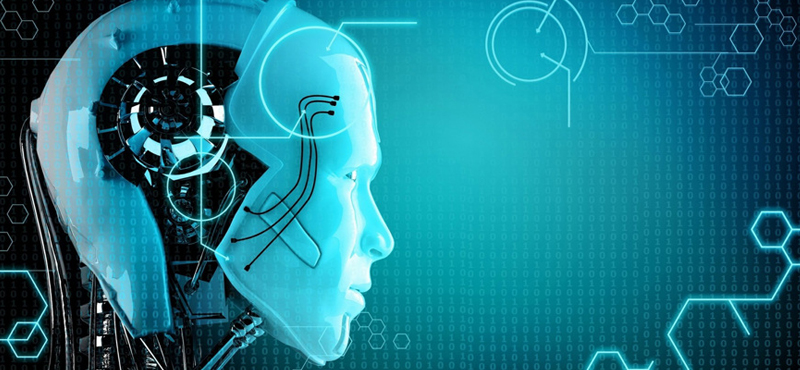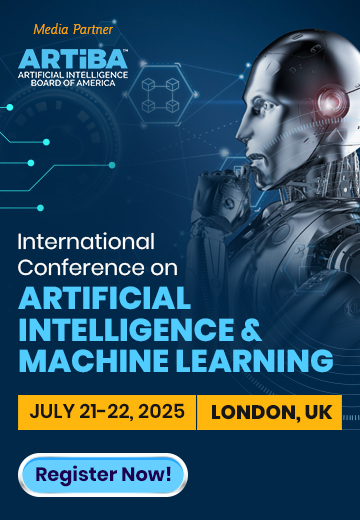Your perfect guide to understand the role of Python in Artificial Intelligence (AI)

“Python has been an important part of Google since the beginning, and remains so as the system grows and evolves. Today dozens of Google engineers use Python, and we’re looking for more people with skills in this language.”
- Peter Norwig
In the field of Artificial Intelligence (AI) the advancements are growing at an exponential rate. The demand for AI is at top level as there are innumerable transformations that are happening in this rapidly-growing technology.
Python is a high-level programing language, which is mainly used for complicated scenarios. It doesn’t require to be compiled into machine language instruction for execution. A developer can use it to directly run the program.
This article on Artificial Intelligence with Python will give a comprehensive guidance on the concepts of AI with real-world applications and use cases in Python.
Why choose Python for AI?
Python is one of the most popular programming languages for AI, which is used by several developers. Guido Van Rossum created it in the year 1991 and ever since its inception it has been among the most highly used languages along with C++, Java, etc.
Python is quite helpful by its prototyping algorithm for AI. Python has unique standardized algorithms that include intuitive syntax, data structures and basic control flow for AI and also is facilitated by interpretive run-time without standard compiler languages.
Let’s have a look at how Python is the right choice for AI when compared to other programming languages like C++ and Java.
To program Artificial Intelligence in C++, it is very important to understand the differences between C++ and Python.
-
Python AI programming is a more popular over C++ as it leads with a 57 percent vote among developers. Python is easy to learn and implement when compared to C++. With its many libraries, they can also be used for data analysis.
-
Python is a dynamic language and reduces complexity especially while collaborating with other technologies, because it can be used with less code. Unlike C++, where all significant compilers tend to do specific optimisation and can be platform specific, Python code can be run on pretty much any platform without wasting time on specific configurations.
-
Python wins over C++ regarding simplicity of code, mainly amongst new developers. C++ being a lower-level language needs more expertise and skills to master.
To master Java programming in Artificial Intelligence, it is essential to know where it stands in comparison to Python.
-
Java is a compiled language and Python is an interpreted language.
-
The two languages are also written differently. A structure in Java is enclosed in braces. Python uses indentation to perform the same tasks.
-
When it comes to performance Java-is the top choice, and for building high-end applications in AI. Python is highly preferred by the developers.
Python offers several libraries for Artificial Intelligence, Machine Learning (ML), and Natural Language Toolkit (NLTK).Let’s have a look at a few of the libraries.
Python libraries for AI
-
Tensorflow
-
AIMA
-
pyDatalog
-
NumPy
-
Theano
-
Keras
-
SimpleAI
-
EasyAI
Which are the Python libraries for Artificial Intelligence?
Let us look a little more in detail about the various and most effective Python libraries for AI:
TensorFlow was developed by Google. This popularly library is very useful in writing Machine Learning (ML) algorithms and also to perform huge computations that involve Neural Networks.
NumPy is a Python library mainly used for computing scientific and mathematical data.
Theano is a functional library that effectively calculates and computes mathematical expressions involving multi-dimensional arrays.
This library simplifies the implementation of neural networks. It consists of impressive functionalities for computing models, evaluating data-sets, and visualizing graphs.
EasyAI is a simple Python engine for two-player games with AI (Negamax, transposition tables, game solving).
What are Python libraries for Machine Learning (ML)?
PyBrain is simple but effective algorithm for ML that gives predefined environments that are very much needed for testing and comparing.
It is a bilateral framework for SVMs and also has several kernel procedures. It is very supportive on Linux and Mac OS X.
This Python data processing framework can be easily expanded. It also consists of collection of supervised and unsupervised learning algorithms.
Scikit-learn is a perfect tool for data analysis while using Python. It is open source and the most popular general purpose library for ML.
What are Python libraries for Natural Language Toolkit (NLTK)?
NLTK is an open source Python library mainly designed for Natural Language Processing (NLP), text analysis, text mining with distributions for Windows, Mac OS X, and Linux.
Learning about these libraries will help to do Python AI programming well. Now, let’s have a glance at a few skills that one must possess to learn Python.
What skills are needed to learn Python?
There are many skills that an individual should have to learn Python. Following are a few of them.
A professional must know the codes that are used in the working of release and deployment. They must have a basic understanding. If one wants to become a Python Developer, then they should learn about MVT (Model View Template) and MVC (Model View Controller) architecture.
An individual will be solving the problems in the core framework after understanding the multi-process architecture. So they must possess excellent analytical skills. These skills are also helpful for designing useful websites for web development, visualizing datasets, optimizing algorithms, and more.
A Python developer is required to work and coordinate with the front-end team to match the client-side with the server-side. There must be a proper knowledge of front-end technologies to know about the appearance of the application, working of front-end, possibilities, and limitations of the front-end.
There are several platforms to deliver an output which include desktop or mobile, and a Python developer must have good knowledge to differentiate between the platforms. One must also be able to optimize the output according to the target platform to match the needs.
Now, let’s look at the ways Python is used in real-world, and a few use cases.
What are the benefits and features of Python?
Python being an object-oriented scripting language offers many benefits and features, which include:
Python possess the ability to run on all operating systems and it is an open-source programming language. It offers flexible usage with fewer modifications required in basic coding.
Python does not need to be compiled into ML before execution but can be run directly by the programmer with the help of native ML, which is known to the hardware. It is useful for a faster and simplified interpretation by an emulator or virtual machines.
Python is very helpful as it can be used over several technologies and domains. Python is especially used for dealing with many variables, arrays, complex arithmetic, objects, Boolean expressions, and various other abstract concepts to make it exhaustive for improving usability.
Python has a dynamic type system; it has programming templates such as imperative, object-oriented, functional and procedural features. It is available for all the operating systems allowing titled CPython that is garnering huge popularity.
Numpy for scientific computation, PyBrain for Python ML, and Scipy for advances computing are the libraries to make Python the best suited programming language for AI.
Globally, Python developers provide wide support and assistance through forums-and tutorials to help; this helps a developer to write code easier.
Let’s now see a list of top global organizations that have understood the benefits of Python and have started implementing it.
How is Python used in the real-world?
Globally many industries use Python to accomplish certain tasks. A few of them are:
Python is popular for data analysis work due its powerful libraries like NumPy and Pandas, which make data cleaning and analysis tasks a lot easier.
Example use case: An ecommerce website wants to understand its users better. A data analyst in the organization can use Python to analyze the organization’s sales, highlight predictable trends, and uncover areas where improvement is necessary.
Many of the websites that are present today are built using Python on Python web frameworks such as Django and Flask.
Use case: An organization needs to develop a new version of its website with certain features. A web developer can design the new site with Python and Django, using the flexibility and power they offer to support any specific or custom features the organization is in need of.
Python is a popular language in the field of robotics. Python is often used together with the Raspberry Pi hardware platform that offers a flexible and affordable experimentation. In business, Python AI programming is used for Robotic Process Automation (RPA).
Use case: An organization orders a number of robotic arms for a manufacturing facility. Engineers can take help from Python to program their behavior, taking benefit of the language’s high-level readability to make it easier for everyone to understand what the arms are meant to be doing.
Python is used in all sorts of real-world hardware-control applications. Python can send commands to and receive data from the system’s sensors and hardware controllers
Example use case: An engineer at an organization requires writing software to control a complex HVAC system.
Which companies are using Python?
Globally many organizations are using Python in various projects. Following is a list of a few of organizations that use Python in the real-world:
-
Google – Google and its subsidiaries like YouTube use Python for vast wide range of aspects. YouTube was built highly using Python.
-
Facebook - Facebook and its subsidiaries like Instagram use Python for several elements of their infrastructure. Instagram is built completely using Python and its Django framework./p>
-
NASA - NASA and associated institutions like the Jet Propulsion Lab use Python for research and scientific purposes.
-
Netflix - Netflix uses Python for server-side data analysis and for a vast variety of back-end apps which is very helpful to maintain the massive streaming service online./p>
-
IBM, Intel, and others – IBM, Intel and a variety of various other hardware firms use Python for hardware testing.
-
Reddit - Reddit runs on Python and its web.py framework./p>
Case Study
An experiment to bring AI to use with Internet of Things (IoT) was done to make an IoT Application for employee behavioral analytics. The software offers feedback to employees via employee emotions and behavior analysis. This is helpful to get positive changes in management and work habits. Using Python ML libraries, a sample Pile of Cores (PoC) was built to detect basic emotions like happiness, anger, sadness, disgust, suspicion, and surprise via wireless cameras that are attached to various bay points.
The data collected was fed to a centralized cloud computing database where daily emotional quotient within the bay or even the entire office would be retrieved at the click of a button either through an Android device or a desktop computer. Developers are making gradual progress in analyzing further complex points on facial emotions with the help of deep learning algorithms and ML that can help analyze individual employee performance and support in proper employee/team feedback.
End Notes
Python plays an essential role in AI by providing it with some amazing frameworks. AI demands a lot of research. Hence Python fits perfectly to fulfil the AI needs. In Python, almost every idea can be instantly validated through 20-30 lines of code. In an endeavour to identify the best language for artificial intelligence-Python remains a pretty useful language in several ways.






